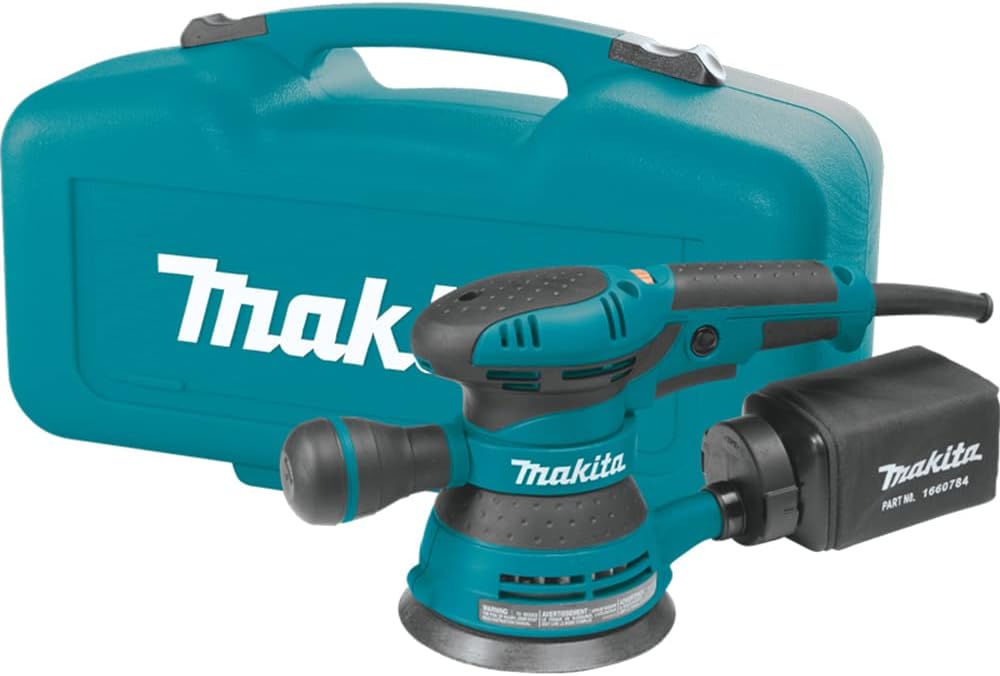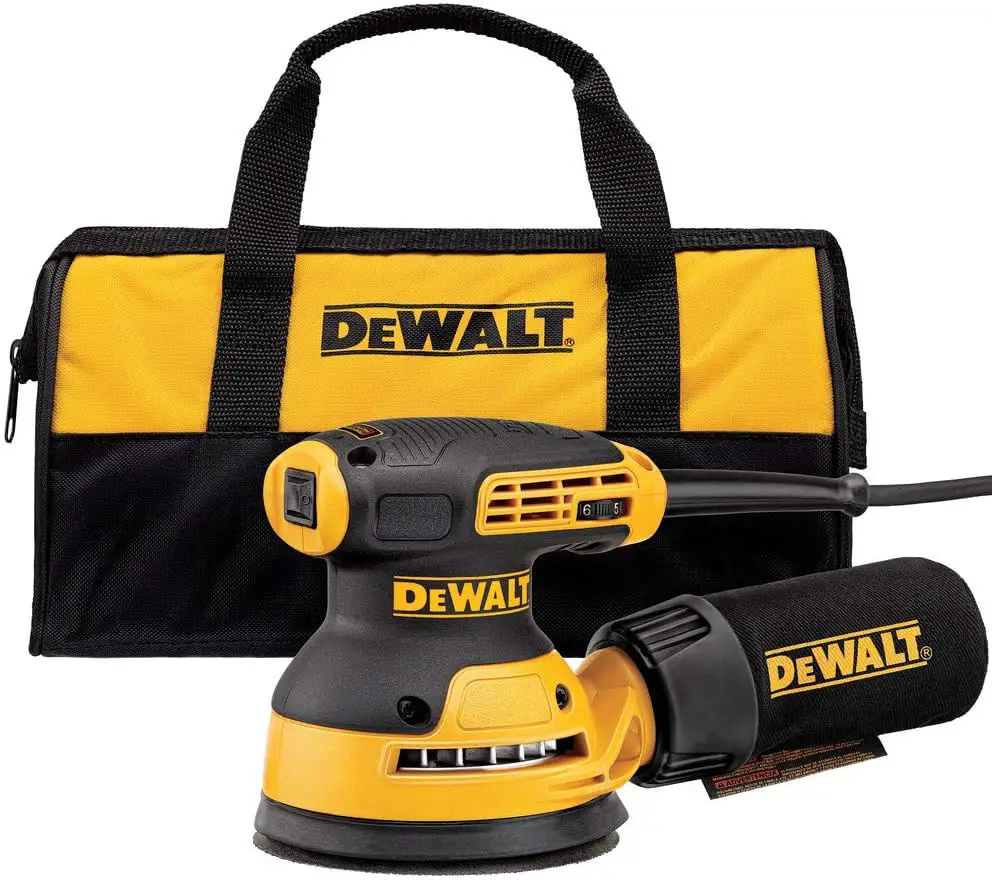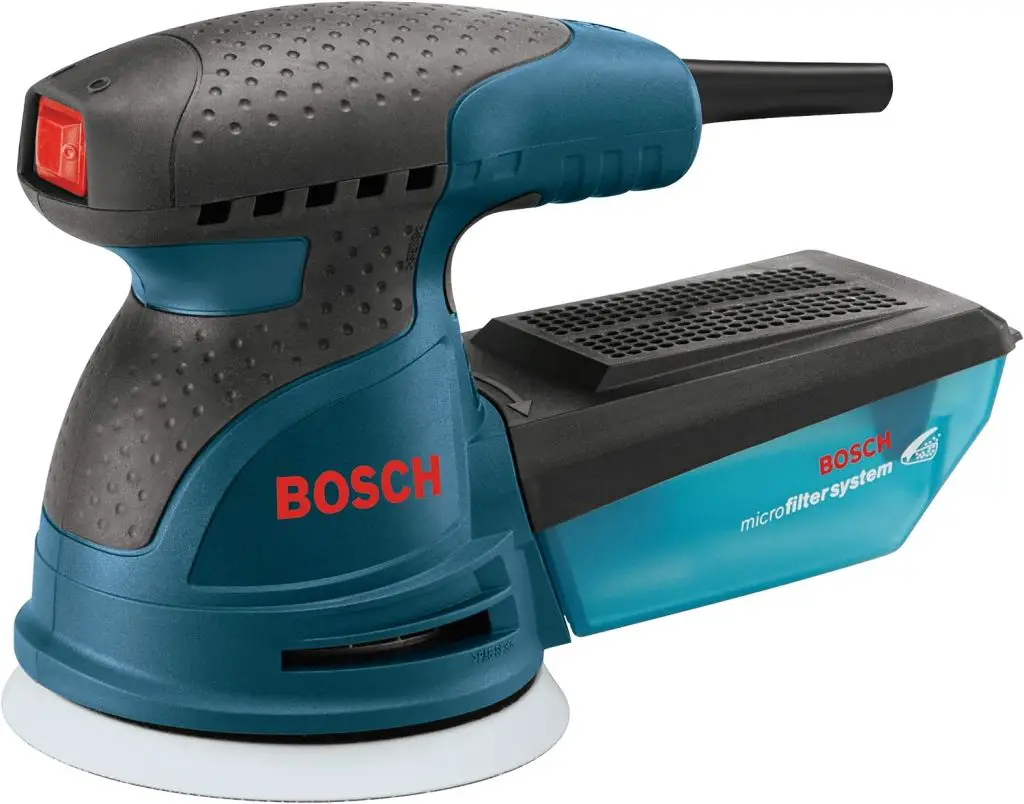
Best Sander for Refinishing Furniture: Transform Your Furniture
The best sander for refinishing furniture is the Bosch ROS20VSC. It has a powerful motor, variable speed control, and a dust collection system for improved performance and convenience.
Furniture refinishing can transform your old piece of furniture and make it look like a brand new one. However, to get the perfect finish, you will need the right tools, and the sander is one of the most critical tools for this job.
If you know what you’re looking for, choosing the right sander for your furniture refinishing project can be helpful. With so many sanders on the market, it is difficult to choose the right one. This article will provide you with some information on what to look for and reviews the best sander for furniture refinishing on the market today.
Related Article: Top 9 Best DIY Tools To Complete A DIY Project

Related Article: Best Power Tool Brands of 2024 for Professional Users
Types Of Sanders For Refinishing
Refinishing furniture can be a fulfilling DIY project, but it requires the right tools, and one of the essential tools for this project is a sander. Sanders come in different types, each with its unique features and advantages. In this article, we will explore the three most popular types of sanders for furniture refinishing: Random Orbital Sanders, Belt Sanders, and Palm Sanders.
Random Orbital Sanders
Random Orbital Sanders are versatile sanders with a circular sanding pad that oscillates, ensuring no repeating patterns in the sanding. The sanding pad moves in an elliptical pattern, reducing the possibility of sanding marks on your furniture. This sander is perfect for sanding furniture with curves, angles, and contours. It’s also effective in sanding away old paint, scratches, and imperfections.
Random Orbital Sanders come in different sizes, but the most common sizes are 5 and 6-inches sanding pad. It’s always advisable to choose the right sandpaper grit for your project, starting with coarser grit sandpaper and working your way up to finer grits for a smoother finish. This sander might take longer than belt sanders, but it’s more effective and easier to handle.
Belt Sanders
Belt sanders are powerful sanders with a sanding belt that moves continuously; they are relatively larger than other types of sanders. This sander is perfect for larger surfaces and furniture with flat surfaces. Belt sanders are fast and efficient, making them ideal for rough sanding, but they can be challenging to maneuver in tight spaces or curves.
When using belt sanders, it’s important to choose the right grit, starting with coarser grit sandpaper and working your way up to finer grits for a smoother finish. Belt sanders have various belt sizes and speeds. They are best suited for tough sanding jobs and removing thick finishes or paint.
Palm Sanders
Palm sanders are small and lightweight sanders that are easy to maneuver. This sander is perfect for small furniture, edges, and corners that need sanding. Palm sanders are known for their precision and perfect finish on furniture. It’s suitable for sanding furniture with Flat surfaces and curves.
This sander uses a small square or rectangular-shaped sanding pad that moves in a circular pattern. It’s essential to choose the right grit, starting with coarser grit sandpaper and working your way up to finer grits. Palm sanders are also known as finish sanders and work best for preparing surfaces for a final finish, such as staining or painting.
Choosing the right sander depends on the project at hand. If you are working on a larger flat surface, a belt sander is the best option. However, for smaller surfaces, tight spaces, curves, and angles, a palm sander or random orbital sander is the perfect choice. With the right sander and sandpaper grit, you can achieve that perfect furniture finish.

Related Article: The Top 9 Best Mechanic Tool Brands for Professional Users
Top Features To Look For In A Sander For Furniture Refinishing
To achieve the best results in furniture refinishing, it is important to look for the right sander. Top features to consider when selecting a sander for furniture refinishing include the power source, the type of sandpaper used, the sanding speed, the dust collection system, and the size and weight of the sander.
Refinishing furniture can be an excellent way to bring your old furniture back to life and extend its durability. However, if you’re going to take on such a task, you’ll need to invest in a good sander. But with the plethora of sanders available in the market, it can be challenging to know which one to pick. Here are the top features to look for in a sander for furniture refinishing:
Variable Speed Control
When it comes to furniture refinishing, having a sander with variable speed control can be a game-changer. This feature allows you to adjust the speed of the sander depending on the type of wood you’re sanding or the abrasiveness of the sandpaper you’re using. Typically, softer woods like pine require a slower speed, while harder woods like oak can accommodate higher speeds. By having control over the speed of your sander, you’ll be able to achieve a smoother finish.
Dust Collection System
Dust can be a significant issue when sanding furniture, so having a sander with a dust collection system is undeniably an essential feature. With a dust collection system, you’ll be able to keep your workspace cleaner and healthier, as you won’t inhale harmful particles that can cause respiratory problems. Some sanders feature a dust bag, while others come with a vacuum attachment. Make sure to choose a sander that suits your workspace and needs.
Comfortable Size And Weight
Furniture refinishing can be a long and tiring process, so it’s crucial to have a sander that’s comfortable to hold and maneuver. The size and weight of a sander play a significant role in how easy it is to use. A sander that’s too heavy can be challenging to use for extended periods, while a sander that’s too small can cause wrist fatigue. Consider the size of your hands and how much time you’ll be spending using the sander before purchasing one.
Easy Sandpaper Change
Lastly, look for a sander that offers easy sandpaper change. Changing sandpaper can be time-consuming and frustrating, especially when you’re in the middle of a project. A sander with a quick, tool-free sandpaper change system can make your life much more manageable and allow you to finish your project faster. In conclusion, choosing the right sander for furniture refinishing is a crucial aspect of achieving a beautiful finish. Ensure that you look for a sander with variable speed control, a dust collection system, comfortable size and weight, and an easy sandpaper change system. With these features in mind, you’ll be well on your way to successfully refinishing your furniture.
Best Sanders For Furniture Refinishing On The Market
Finding the right sander for furniture refinishing is crucial for achieving a flawless finish. The best options on the market feature versatile designs, unique capabilities, and powerful motors to tackle any project with ease.
If you’re seeking to revive your old furniture, then refinishing them is the way to go. The process involves sanding off old finishes, creating a clean and smooth surface for new coats of paint or stain. However, with several sanders in the market, choosing the right one can be overwhelming. In this blog post, we will review three of the best sanders for furniture refinishing on the market: Makita BO5041K, DeWalt DWE6423K, and Bosch ROS20VSC.
Makita BO5041K 5″ Random Orbit Sander
Makita BO5041K is a powerful sander that comes with a 3-amp motor ideal for refinishing furniture. It has a variable speed control dial that allows the user to adjust the speed from 4,000-12,000 orbits per minute (OPM). The front handle of this sander provides excellent user comfort and reduces fatigue during extended use. Additionally, it features a random orbit, making it less aggressive and perfect for handling delicate furniture surfaces. This model weighs only 3.09lbs, making it easy to maneuver and control.

DEWALT DWE6423K Variable Speed Random Orbit Sander
DeWalt DWE6423K is a highly durable sander with a 3.0-amp motor capable of delivering a speed range of 8,000-12,000 OPM. The shorter height of this model makes it more comfortable to use, and the anti-slip top and body grip ensure better control. It is also designed to reduce vibration while in use, which provides better comfort for the user. The dust-sealed switch assists in extending the tool’s lifespan by preventing dust ingestion.

BOSCH ROS20VSC Palm Sander
Bosch ROS20VSC sander offers a 2.5-amp motor and a variable speed control that ranges from 7,500-12,000 OPM. The dust collection system is highly efficient with a micro-filter dust canister that captures the smallest particles as small as 0.5 microns in width. The compact size and ergonomic design of this model make it convenient to use for an extended period without causing any fatigue. It also comes with a vacuum hose adapter for an easy connection to any vacuum cleaner to keep your work area cleaning while working. In conclusion, when selecting the best sander for furniture refinishing, your comfort level when using the machine should be a top consideration. Hence, out of the three best sanders for furniture refinishing discussed above, choose one that you find comfortable to use and will provide the desired outcome.

Tips And Techniques For Sanding Furniture
Sanding furniture can be a time-consuming process but choosing the right sander can make all the difference. A belt sander is the best option for large flat surfaces, while an orbital sander is ideal for curved and intricate pieces. Always start with a coarse grit sandpaper and work your way up to a finer grit for a smooth finish.
As furniture seems to age or goes out of style, it evokes the demand to change or refinish it. Refinishing furniture often requires certain essential tools, and a sander is one of them. Instead of buying a new one, you can have the old furniture sanded to provide it with a new look. However, sanding furniture can be tricky and time-consuming. Therefore in this post, we will cover some essential tips and techniques to make the process of sanding furniture smooth and efficient.
Preparing Your Work Area
The first tip for sanding furniture is to create a safe and stable work area. To prepare your work area, remove all the clutter and other unnecessary items. The furniture piece should be placed on a stable surface, and if it’s an upward-folding table or chair, you should secure it to prevent it from wobbling. Ensure the surface is clean and dry before beginning the sanding process.
Choosing The Right Sandpaper Grit
The second essential tip when sanding your furniture is choosing the right sandpaper grit. The grit size you select will depend on how rough the surface of the furniture piece is. Typically, the grit ranges from 40 to 150 in most sandpapers. The lower the number, the more abrasive the sandpaper. If the furniture has a rough surface, start with 40-grit sandpaper, then 80-grit and gradually increase the grit number, concluding with 150-grit.
Sanding Strategies
The third tip is applying sanding strategies. Start by wearing protective equipment such as a dust mask and gloves to prevent inhaling dust and debris. Use a back-and-forth motion to move the sander across the furniture and apply even pressure when working on flat surfaces. When dealing with corners, switch to sanding paper hand-sanding. For round surfaces, use a sanding sponge. When sanding edges, wrap the sandpaper around a dowel or other cylindrical object of similar size. Sand in the direction of the wood grain to have a smooth finish in the end.
Avoiding Common Mistakes
Last but not least, avoiding common sanding mistakes is essential for successful furniture refinishing. Some of the common sanding mistakes to avoid include applying too much pressure, using the wrong grit, and not sanding in the direction of the wood grain. Another common mistake is going into auto mode when sanding, so you need to take breaks every so often to assess the progress and the surface you’re sanding. In conclusion, sanding furniture isn’t much of a challenge when you use the right tips and techniques. Preparing the workspace, selecting the right sandpaper, following established sanding strategies, and avoiding common mistakes results in a polished and fresh-looking furniture piece.
Conclusion
After carefully analyzing the features of various sanders, we have concluded that the Bosch ROS20VSC Random Orbital Sander is the best choice for furniture refinishing. Its powerful motor, efficient dust collection system, and ergonomic design make it ideal for both professional and DIY use.
Investing in this sander will not only save you time and effort but also yield smoother and more polished results. Don’t compromise on quality, choose the best sander for your furniture refinishing project and enjoy the satisfaction of a job well done.
Related Article: The 11 Basic Power Tools Safety Rules for Professional Users





3 Comments
Pingback:
Pingback:
Pingback: